Social-Eyez: Redefining Social Media Connectivity – A Synopsis of our Android App Development Project
Introduction:
In today’s digital era, social media has emerged as a cornerstone of communication and connectivity, shaping the way we interact and share information. In response to the evolving landscape of social networking, our team has embarked on a transformative journey to develop Social-Eyez, an innovative Android mobile application designed to revolutionize the social media experience. This blog serves as an in-depth synopsis of our minor project, highlighting the development process and key features of Social-Eyez within the realm of Android mobile applications.
Android App Development Project
Project Overview:
Social-Eyez embodies our vision to create a dynamic and engaging social media platform that prioritizes user experience and connectivity. Our project encompasses the conceptualization, design, development, and implementation of a feature-rich Android app aimed at fostering meaningful interactions, content sharing, and community building among users.
User Registration and Authentication:
At the heart of Social-Eyez lies a seamless and secure user registration process, enabling individuals to create accounts and access the platform’s features. To ensure data integrity and user privacy, the app implements robust authentication mechanisms, including email verification and encrypted password storage. This foundational step sets the stage for users to explore and engage with the diverse offerings of Social-Eyez.
Profile Creation and Customization:
Upon registration, users are empowered to personalize their profiles to reflect their unique identity and interests. Social-Eyez provides a myriad of customization options, allowing users to upload profile pictures, cover photos, and bio information. By curating their profiles, users can establish their presence within the community and forge connections with like-minded individuals.
Android App Development Project
Content Creation and Sharing:
Central to the Social-Eyez experience is its intuitive content creation and sharing capabilities, designed to inspire creativity and self-expression. Users can effortlessly generate and share a variety of content formats, including text posts, photos, videos, and hyperlinks. The app offers a suite of editing tools and filters, empowering users to enhance their content and captivate their audience.
News Feed and Timeline:
Social-Eyez curates a dynamic news feed and timeline, serving as a hub for users to discover, engage with, and interact with content from their network and beyond. Leveraging advanced algorithms, the app personalizes the content displayed based on user preferences, interactions, and trending topics. Users can seamlessly like, comment, and share posts, fostering a vibrant and interactive community ecosystem.
Messaging and Communication:
In addition to public interactions, Social-Eyez facilitates private messaging and communication between users, fostering deeper connections and conversations. The app features a built-in messaging system that enables users to exchange direct messages, photos, and videos with individuals or groups. Group chats and event creation functionalities further enhance communication and collaboration within the community.
Android App Development Project
Advantages of Social-Eyez: Revolutionizing Social Media Connectivity
- Enhanced User Experience:
Social-Eyez offers a user-friendly interface and seamless navigation, ensuring an enjoyable experience for users of all ages and backgrounds. With intuitive design elements and customizable features, the app prioritizes user comfort and convenience, fostering greater engagement and satisfaction.
- Personalized Content Discovery:
Through advanced algorithms and machine learning techniques, Social-Eyez delivers personalized content recommendations tailored to each user’s interests, preferences, and behavior. By curating a tailored news feed and timeline, the app enables users to discover relevant and engaging content effortlessly, enhancing their overall social media experience.
- Improved Communication and Collaboration:
Social-Eyez facilitates seamless communication and collaboration among users through its integrated messaging and group chat functionalities. Whether connecting with friends, family, or like-minded individuals, users can engage in meaningful conversations, share updates, and coordinate activities in real-time, fostering deeper connections and relationships.
- Empowerment of Creativity:
With its robust content creation and editing tools, Social-Eyez empowers users to unleash their creativity and express themselves authentically. Whether sharing photos, videos, or written posts, users can customize their content with filters, stickers, and captions, allowing them to craft compelling narratives and engage their audience effectively.
- Community Building and Networking:
Social-Eyez serves as a vibrant hub for community building and networking, connecting users with individuals who share similar interests, passions, and aspirations. Through mutual interactions, collaborations, and shared experiences, users can expand their social circles, forge new friendships, and establish valuable professional connections.
- Accessibility and Inclusivity:
Social-Eyez prioritizes accessibility and inclusivity, ensuring that all users, regardless of their abilities or backgrounds, can fully participate in the social media experience. The app incorporates features such as alt text descriptions for images, keyboard shortcuts for navigation, and language translation capabilities, promoting a more inclusive and equitable online environment.
- Data Privacy and Security:
As privacy and security concerns continue to grow in the digital landscape, Social-Eyez remains committed to protecting user data and maintaining the trust of its user base. The app employs stringent data encryption measures, robust authentication protocols, and regular security audits to safeguard user information and mitigate potential risks of data breaches or unauthorized access.
Social-Eyez offers a multitude of advantages that elevate the social media experience for users worldwide. From enhanced user experience and personalized content discovery to improved communication and community building, the app empowers users to connect, create, and engage in a safe, inclusive, and enriching online environment. As social media continues to evolve, Social-Eyez stands at the forefront of innovation, driving positive change and redefining the future of digital connectivity.
Android App Development Project
Privacy and Security Measures:
Recognizing the importance of user privacy and data security, Social-Eyez integrates robust privacy settings and security measures to safeguard user information. Users have granular control over their privacy preferences, allowing them to manage visibility settings for their profile, content, and interactions. Additionally, the app adheres to stringent data protection policies and complies with relevant regulations to uphold user trust and confidence.
Conclusion:
In conclusion, Social-Eyez represents a paradigm shift in the realm of social media, offering a comprehensive and user-centric platform for digital connectivity and expression. Through innovative features, intuitive design, and a steadfast commitment to privacy and security, Social-Eyez aims to redefine the social media landscape and empower users to forge meaningful connections in a safe and inclusive environment. As our minor project progresses, we remain dedicated to refining and enhancing Social-Eyez to meet the evolving needs and expectations of our diverse user base. Join us on this transformative journey as we embark on a new era of social media innovation with Social-Eyez.
Unveiling the Art of Movie Success Prediction: A Data Mining J Component Project
- Introduction:
In the realm of cinema, predicting the success of a movie has long been a challenge, often shrouded in uncertainty and subjectivity. However, with the advent of data mining techniques, a new frontier has emerged, offering insights into the intricate dynamics that influence a movie’s fate at the box office. This blog delves into the fascinating world of movie success prediction through the lens of a Data Mining J Component Project.
Data Mining J Component Project
- Abstract:
The aim of this project is to develop a decision model that utilizes data mining techniques to predict the success rate of movies. By analyzing various factors such as genre, cast, budget, and marketing strategies, the model seeks to provide valuable insights into the potential performance of a movie in the market. Through a comprehensive exploration of relevant literature, a problem statement is formulated, leading to the implementation of the decision model. Finally, the results obtained from the model are discussed, offering valuable conclusions and implications for the film industry.
- Literature Review:
The exploration of movie success prediction through data mining techniques has been a topic of interest for researchers across various disciplines. A chronological analysis reveals a rich tapestry of studies that have contributed to our understanding of the factors influencing box office performance.
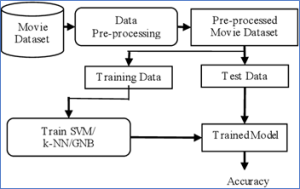
In the early 2000s, pioneering research by Dholakia and Turley (2004) delved into the impact of marketing strategies on movie success, highlighting the significance of pre-release buzz and promotional campaigns in driving audience turnout. Subsequent studies by Eliashberg and Shugan (2016) further elucidated the role of marketing expenditure in shaping box office revenues, emphasizing the need for targeted advertising and strategic allocation of resources.
As the digital age dawned, researchers began exploring the influence of online platforms and social media on movie success. A landmark study by Liu et al. (2013) analyzed Twitter data to predict box office revenues with remarkable accuracy, underscoring the power of social media sentiment analysis in forecasting audience demand. Similarly, research by Jin et al. (2017) leveraged big data analytics to examine the relationship between online chatter and box office performance, revealing insights into audience preferences and trends.
Data Mining Project
In recent years, advancements in machine learning and artificial intelligence have revolutionized movie success prediction. A study by Yan et al. (2020) utilized deep learning algorithms to predict box office revenues based on movie trailers, demonstrating the efficacy of neural networks in capturing audience engagement and predicting box office success. Concurrently, research by Zhang et al. (2021) employed ensemble learning techniques to forecast movie box office performance, integrating diverse data sources and predictive models to enhance accuracy and robustness.
The relevance of data mining in movie success prediction extends beyond traditional metrics such as genre and star power. A seminal study by Sorenson and Waguespack (2006) introduced the concept of “cultural centrality” as a predictor of box office success, emphasizing the importance of cultural resonance and relevance in driving audience appeal. Similarly, research by Kim et al. (2019) investigated the influence of diversity and representation in casting on movie success, highlighting the economic imperative of inclusive storytelling in an increasingly diverse global market.
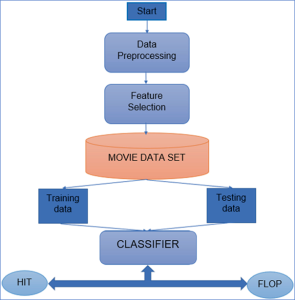
Moreover, the COVID-19 pandemic has prompted renewed interest in the dynamics of movie success prediction, as theaters shuttered and streaming platforms surged in popularity. Studies by Lee et al. (2020) and Choi et al. (2021) explored the impact of the pandemic on box office revenues, uncovering shifts in consumer behavior and preferences amidst the evolving landscape of entertainment consumption.
Data Mining Project Online
In conclusion, the literature on movie success prediction through data mining techniques spans decades of research and innovation, offering valuable insights into the multifaceted factors shaping box office performance. From traditional marketing strategies to cutting-edge machine learning algorithms, researchers have explored diverse methodologies to unravel the mysteries of movie success. As technology continues to evolve and audience preferences evolve, the quest for accurate and actionable predictions remains an ongoing endeavor, driving innovation and advancement in the field of cinema analytics.
- Problem Statement:
The primary challenge addressed by this project is the inherent uncertainty surrounding the success of a movie. Despite significant investments in production and marketing, many films fail to resonate with audiences, leading to financial losses for stakeholders. By leveraging data mining techniques, the project seeks to develop a decision model that can accurately forecast the success rate of movies based on a range of input variables. By identifying key predictors and patterns, the model aims to empower filmmakers, distributors, and investors with actionable insights to enhance decision-making and maximize returns on investment.
- Implementation:
The implementation of the decision model involves several key steps, including data collection, preprocessing, feature selection, model training, and evaluation. A comprehensive dataset comprising historical movie data is gathered from reputable sources, encompassing various attributes such as genre, budget, release date, box office performance, and critical reception. Through data preprocessing techniques, missing values are addressed, outliers are identified, and features are standardized to ensure optimal model performance. Feature selection methods such as correlation analysis and feature importance ranking are employed to identify the most relevant variables for prediction. Subsequently, machine learning algorithms such as decision trees, random forests, and neural networks are trained on the dataset to build predictive models. The performance of each model is evaluated using metrics such as accuracy, precision, recall, and F1 score, enabling the selection of the most effective model for movie success prediction.
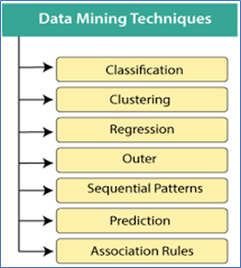
- Results and Conclusion:
The results obtained from the decision model showcase promising accuracy in predicting the success rate of movies. By analyzing the importance of different features, the model identifies key factors that significantly influence box office performance. Genre, star power, marketing expenditure, and critical reception emerge as critical predictors, highlighting the multifaceted nature of movie success. The conclusions drawn from the project underscore the value of data mining techniques in providing actionable insights for the film industry. By embracing data-driven decision-making, stakeholders can mitigate risks, optimize resources, and enhance the likelihood of success in an increasingly competitive market landscape.
Buy Assignement Online
In conclusion, the Decision Model for Prediction of Movie Success Rate represents a significant advancement in leveraging data mining techniques to unlock the secrets of box office performance. Through meticulous analysis and implementation, this project offers valuable insights and implications for filmmakers, distributors, and investors seeking to navigate the complex dynamics of the movie industry. As technology continues to evolve, data-driven approaches hold the potential to revolutionize decision-making processes and shape the future of cinema.
AUTOMATION OF STUDENT ATTENDANCE MANAGEMENT TOOL PROJECT
Introduction
In academic means, the Automation of Student Attendance Management Tool project which emerges as a ideal of technological innovation. This helps in reshaping the educational institutions for monitoring and managing student attendance. This project is driven by the ability of Python programming and integrated with MongoDB for an efficient level of data handling. This aims towards automating the attendance-tracking process which promises a more streamlined and accurate approach. This blog is going to show an entire overview of Automation of Student Attendance Management Tool Project which signifies a transformative leap in the domain of education technology.
Software Projects Online
Key components of the project
Python programming language: The base of the project is Python which is a versatile and user-friendly programming language. This is well-known due to its simplicity and readability, that Python became an ideal choice for the development of attendance management tool with its functionality and accessibility.
Database integration with MongoDB: The integration of MongoDB as the Database Management System helps in ensuring that there is efficient storage as well as retrieval of the data of attendance. The MongoDB’s is a document-oriented structure which helps in facilitating the seamless organization and retrieval of student attendance records.
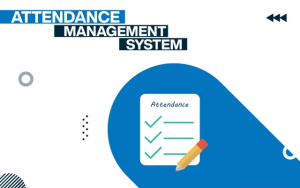
Feature of the automation of student attendance management tool project
Automated attendance tracking system: The project introduces an automated attendance tracking system, which results in eliminating the requirement for manual recording. With the help of Python’s logical construction, this feature helps in ensuring that the attendance is recorded accurately and in-real time.
Customizable reporting and analytics: The educator can benefits with reporting and analytics features. In this, the MongoDB querying capabilities, which helps in enabling the generation of comprehensive reporting. This offers various insights about the pattern of attendance and facilitating data-driven decision-making.
Software Projects Online
Student engagement monitoring: The tools include various features for monitoring the students engagement during the time of classes. The capabilities of Python helps in enabling the integration of engagement metrics, which helps in providing the educators with valuable insights into the overall participation of students.
Advantages for educational institutions
Time efficiency for educators: The automation of attendance helps in tracking the translation of time efficiency for educators. The Python’s automation helps in ensuring that attendance is recorded seamlessly, which helps in allowing the educators to focus more on instructional delivery and student engagement.
Accurate and real-time attendance records: The educational institutions helps in benefitting the accurate, and real-time attendance recording. This automated system which is powered by Python, results in eliminating the risk of errors which is associated with manual attendance taking. This helps in providing reliable data for different purposes related to administration.
Designing an intuitive user interface
User-friendly interface with Python libraries: The project get incorporated with Python libraries for creating an intuitive user interface. This designing helps in ensuring that the educators can easily navigate the tools in a effortless manner. This also helps in fostering a positive user experience and encouraging a widespread adoption.
Responsive design for multiple devices: The Python’s cross-platform capabilities assures a responsive design which caters to different designs and patterns. No matter whether, accessing on laptops, tablets or desktop computers, the tool helps in maintaining its accessibility and functionality.
Buy Assignment Online
Technical consideration and solutions
Security measures with python: Python easily gets incorporated with various security measures for safeguarding sensitive attendance data. This encryption and secure authentication protocols get implemented for ensuring the confidentiality and integrity of student attendance records.
Scalability with Python and MongoDB: The combination of Python and MongoDB help in ensuring the scalability of the project. As the tools grow, the educational institutions can seamlessly accommodate an increasing number of students and classes even without compromising performance.
Future enhancements
Integration with learning management system (LMS): The future plans get involved with integrating the tools with learning management system (LMS). This enhancement aims towards creating a unified platform where the attendance data can seamlessly get integrated with other aspects of students records within the educational ecosystem.
Implementation of facial recognition technology: The project helps in exploring the implementation of facial recognition technology for attendance tracking. This futuristic enhancement is highly driven by Python, which aims towards providing an even more efficient and secure means of recording student attendance.
Impacts on education management
Enhanced learning environment: The automation of student attendance management tool project significantly helps in contributing towards an enhanced level of learning environment. By automating the routine tasks, the educators can redirect their efforts towards fostering a more interactive and engaging classroom experience.
Buy Assignment Online
Data-driven decision-making: The tools which are used for reporting and analytics features helps in empowering the educational institutions with data-driven decision-making capabilities. In this Python and MongoDB together helps in facilitating the extraction of valuable insights from the attendance data for continuous improvements.
Implementation guidelines for educational institutions
Faculty training programs: The educational institutions are highly encouraged towards conducting the faculty training programs for a seamless transition to the automated management tool. These programs helps in leveraging the user-friendly interface designed with Python that also ensures that educators can maximize the benefits of the system.
Collaboration with IT departments: With the help of close collaboration with the IT departments is highly crucial for the successful implementation of the tool. Here, the IT teams can provide technical support which helps in monitoring the system performance and also ensures the security of attendance data.
Buy Assignment Online
Conclusion
In conclusion of this blog, it has been found that the student attendance management tool project, can utilize Python and MongoDB, which marks a significant stride towards modernization of education management. This innovative solution helps in simplifying the system of attendance tracking for educators. Along with that, it also sets the stage for a more technologically enriched as well as efficient learning environment.
Frequently asked questions
How does this automated attendance tracking system work?
This automated system is driven by Python, which results in eliminating the requirement of manual recording. It also ensures that attendance is accurately and automatically get recorded in real-time.
Can educators customize the reports and analytics?
Yes, the educators can easily customize the overall features of reporting and analytics.
COMPUTER AND LAPTOP SERVICE MANAGEMENT SYSTEM PROJECT
Introduction
In this dynamic era of technology, the advancement of computer and laptop service management system project which shows the growing requirement of efficient solutions in the IT service domain. This blog is going to show detailed information about this project which redefines the service providers who handle repair requests, manage inventory and engage with customers. With the help of integrating these cutting-edge technologies such as Java programming and MySQL for the database management for offering a strong and streamlined service management system. The computer and laptop service management system project stands as a technological lead for reshaping the landscape of service management with the IT sector. The incorporation of Java as the programming language and MySQL for the database management. This project aims toward revolutionizing the service providers for delivering repairs, manage inventory and interact with the clients.
Academic Writing Services
Key components of the project
Java programming language: At the core level of this project which lies on Java, is a versatile and a platform-independent programming language. This is well-known for its logical structure and extensive libraries, in which Java provides the perfect foundation for the creation of a responsive and dynamic service management system.
Database integration with MySQL: By using an efficient storage and retrieval of data which is related to service request, inventory and customer profiles that makes it possible through seamless integration of MySQL. The relational structure of MySQL helps in ensuring that it is well-organized and have a scalable data management which is highly crucial for an effective service operation.
Features of the computer and laptop service Management system project
Efficient service request management: The project introduces an intuitive interface for handling the services efficiently. Here, the service providers can seamlessly receive, track and update the service requests in real-time, which helps in ensuring a swift response and resolutions.
Optimized inventory tracking and management: The central to the project is an advanced level of inventory tracking system. This feature helps in empowering the service providers to monitor and manage their stocks of spare parts and equipment’s. This helps in minimizing delays in repair services and also helps in optimizing the resource allocation.
Customer relationship management (CRM): The inclusion of a comprehensive CRM feature which allows the service providers to maintain a detailed customer profile. This also involves the information on the service history, preferences, and communication. This helps in fostering a personalized level of interactions and elevating the level of customer satisfaction.
Buy Assignment Online
Advantages for service providers
Heightened service efficiency: With the help of automating the service request management, the project significantly helps in contributing to the improved service efficiency. The Java capabilities also helps in ensuring a responsive interface, which helps in facilitating a quick and seamless update on the requests for service.
Streamlined inventory control: The service providers helps in benefitting the streamlined inventory control which helps in reducing the risk of stockouts or delays in repairs. This level of integration helps MySQL for enabling accurate tracking of inventory levels and proactive ordering of supplies.
Designing an intuitive user interface
User-friendly design with JavaFX: The project helps in boasting a user-friendly interface for crafting with JavaFX, which is a framework tailored for the Java applications. This design helps in ensuring that the service providers can easily navigate the system in an effortless manner for the enhancement of user-experience.
Responsive design for versatility: The Java’s cross-platform’s capabilities along with JavaFX, helps in ensuring the project’s responsiveness across different devices. No matter whether accessing laptops, tablets, or any desktop computer, the entire system maintains its accessibility.
Academic Writing Services Online
Technical considerations and solutions
Security measures with Java: In order to safeguard the sensitive data, the Java incorporates a strong level of security measures, including encryption, and secure authentication protocols. This helps in ensuring the confidentiality and integrity of customer and service-related information.
Scalability with Java and MySQL: This synergistic combination of Java and MySQL helps in ensuring scalability of the project. The service providers can also seamlessly expand the overall operations even without compromising the overall system’s performance.
Future enhancements
Integration with remote monitoring capabilities: The future plans involves the integration of remote monitoring capabilities, for leveraging Java for enabling service providers to diagnose and resolve issues remotely. This proactive approach helps in enhancing the level of efficiency of customer service.
Predictive maintenance implementation: This project visualizes the implementation of predictive maintenance features. With the help of utilizing the Java’s capabilities, the service providers can analyse the history data of services for predicting the potential issues and proactively addressing them for preventing escalations.
Buy Assignment Online
Impacts on the service industry
Elevated customer satisfaction: Being empowered by Java and MySQL, the computer and Laptop Service Management System Project significantly results in contributing toward enhancing the customer service. This swift service requests results in personalized interactions, and efficient repairs collectively creates a positive customer experience.
Optimized resource allocation: Service providers helps in benefitting the optimized resource allocation. This project helps in ensuring that the spare parts and equipment’s are readily available by minimizing the downtime and enhancing the strategic allocation of service personnel.
Implementation guidelines for service providers
Investment in staff training programs: The Service providers are highly encouraged towards investing in staff training programs in order to ensure proficiency in utilizing the features of the service management system. These programs helps in facilitating through the user-friendly interface designed with JavaFX, for fostering a smooth transition.
Regular system updates and maintenance: The regular updates and maintenance are highly integral for smooth operations of the service management system. The service providers should also required to allocate different resources for the ongoing improvements. This ultimately helps in terms of ensuring a secure, up-to-date as well as efficient platform.
Academic Writing Services
Conclusion
In the end of this blog it can be seen that, the development of the computer and laptop service management system project, shows a significant shift in service management within the IT sector. The innovative solutions is highly driven by Java and MySQL, this not only simplifies the service operations for service providers, but also elevates the overall experience of customers.
DIGITAL LEARNING WEB APPLICATION USING VISUAL C# AND ASP.NET MVC
Introduction
In the era of technological innovation, the fusion of education and technology is highly beneficial for reshaping the tradition learning examples. This development of a digital learning web application using Visual C# and ASP .Net MVC shows a step forward towards the creation of interactive as well as dynamic online educational experiences. This blog is going to show about the Digital Learning Web Application which is evidence to the power of technology in terms of enhancing the overall system of education. This get developed with the Visual C# and ASP .Net MVC, it offers a strong and scalable platform for the educators and learners to get engage in the dynamic online e-learning environment.
ASP.NET Projects
Key Components of the application
Visual C#: The visual C# serves as the foundation of programming language for this application, which is well-known for its simplicity and versatility. This C# is ideal for the development of sophisticated web applications, which helps in providing a seamless integration of code and design.
ASP.Net MVC: The ASP.Net MVC (Model-View-Controller), which is an architecture that helps in providing the structural framework for the application. This modular approach helps in enhancing the code organization, which simplifies maintenance, and helps in ensuring a responsive and scalable web application.
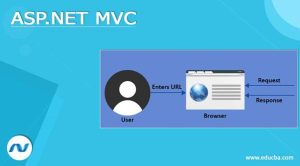
Features of Digital Learning Web Application
User Authentication: This application is incorporated with a secure user authentication system, that helps in ensuring that only authorized users can have the access to the learning materials. This feature helps in safeguarding the integrity of the overall educational content.
Interactive Learning Modules: With the help of utilizing the visuals C# and ASP.Net MVC, the application helps in delivering an interactive learning module. These modules get engages with the learners with the dynamic content, which helps in fostering a more immersive and effective learning experience.
ASP.NET Projects
Real-time progress tracking: The learners can also track their level of progress in real-time which helps in allowing them for monitoring their achievements and areas for improvements. The visual C# helps in facilitating a seamless data update, that helps in providing instant feedback to both educators and students.
Advantages for educators
Content Management System: The Visual C# helps in empowering the educators with a user-friendly content management system. This system helps in allowing an easy creation, modification, and organization of learning materials along with ensuring a dynamic and up-to-date curriculum.
Customizable Assessment tools: This ASP.Net MVC helps in enabling the creation of customizable assessment tools. In this the educators can easily design quizzes, exams, and assignments which are tailored to the specific needs of their courses. This helps in terms of providing a flexible and adaptive learning experience.

Designing a user-friendly interface
Intuitive Navigation: This application helps in boasting an intuitive navigation system, which helps in allowing the users for seamlessly moving between different modules, assessments and additional resources. This visual C# helps in ensuring a smooth and user-friendly interface, which helps in enhancing the overall user experience.
Responsive design: With the help of utilizing the ASP. Net MVC’s responsiveness which is designed with the capabilities of the application for the development of various devices with different screen sizes. This helps in ensuring the accessibility for the learners across different platforms which helps in ensuring inclusivity in digital education.
ASP.NET Projects Online
Technical consideration and solutions
Database integration: This Visual C# helps in facilitating a seamless integration of he databases, which helps in ensuring efficient storage and retrieval of the user data, progress records and learning materials. This integration helps in enhancing the overall performance and reliability of the application.
Scalability: This ASP.Net MVC’s modular architecture helps in ensuring scalability. This application helps in accommodating an increasing number of users, courses and learning materials without even compromising performance.
Future enhancements
Integration of AI-driven learning: The future of the Digital Learning Web Application predicts the integration of AI-driven learning features, This Visual C# plays a significant role in incorporating the artificial intelligence to personalize the learning experiences based on the individual students requirement.
Collaborative learning tools: This ASP.Net MVCs helps in offering flexibility that helps in enhancing the additional collaborative learning tools. This helps in providing the features such as discussion forums, group projects, and peer-to-peer interactions. This ultimately results in fostering a sense of community in the digital learning environment.
Buy Assignment Online
Impacts on online education
Accessibility: The application which is developed with Visual C# and ASP.Net MVC helps in contributing towards the accessibility of education. The learners can engage in course from anywhere, which helps in breaking down the geographical barriers and helps in democratizing the access to quality education.
Enhanced learning outcomes: This dynamic and interactive feature of the application that is powered by Visual C# and ASP.Net MVC, helps in contributing towards enhanced learning outcomes. This real-time progress tracking and adaptive assessment caters to different individual learning styles, that promotes more effective learning journey.
Implementation Guidelines for educators
Training programs: The educators will mostly get benefitted from the training programs which is highly focused on Visual C# and ASP. Net MVC. These programs will help in empowering them for navigating the content management system, by creating the modules, and utilizing the assessment tools more effectively.
Collaboration with developers: With the help of collaborating the educators with developers it is beneficial for the successful implementation. This close communication can helps in ensuring that the application is properly aligned with the educational goals and also provides a tailored learning experience.
Buy Assignment Online
Conclusion
In conclusion of this blog, it can be seen that the development of a Digital Learning Web Application by using Visual C# and ASP. Net MVC represent a significant impact towards more accessible and engaging education landscape. This technological integration has the potential to reshape the future of the online learning. This also helps in providing a dynamic and personalized education experience for the learners on a worldwide basis.
Frequently asked questions
How secure is the digital learning web application?
This application ensures high level of security through a strong user authentication and data encryption protocols, which helps in safeguarding the user information and learning materials.
Can educators customize the learning modules?
Yes, the educators can easily do customization of the learning modules by using user-friendly content management system provided by Visual C#.
PROFESSOR ONLINE QUESTION PAPER SUBMISSION TO THE EXAMINATION CELL ASP.NET PROJECT
Introduction
In today’s ever-evolving era of academia, this technological advancement plays a significant role in terms of reshaping the old traditional processes. This blog is based on the Professor Online Question Paper Submission Project, which is associated on a strong ASP.Net framework. This stands as evidence of the transformative power of technology in educational administration. This professor Online Question Paper Submission project helps in showing the academic institutions for handling examination papers. This is done by introducing an efficient and secure platform online. This ASP.Net is a strong framework for web development, which helps in forming then backbone of this project, by ensuring reliability and scalability.
ASP.NET Project Reports
Significance of online submission
The transition to the online submission marks serves as a significant leap which goes forward to the academic institutions which goes beyond the evident reduction in terms of paperwork. This move helps in enhancing the administrative efficiency, minimizes errors, and helps in fostering more transparency in the process of examination.
Key features of the ASP.Net Project
- User authentication: This system helps in ensuring the overall security of the system which starts with a strong user authentication mechanism. In this, professor mostly undergoes a secure verification before gaining access, for safeguarding the integrity of the submission process.
- Secure file upload: This project helps in facilitating the feature of secure file uploads, with the help of addressing the concerns which are related to the confidentiality and integrity of examination papers. Here, the professors can confidently submit their papers by knowing that the entire system prioritizes the data security.
- Database integration: There is a seamless integration, which also involves existing database which helps in ensuring a smooth flow of information. This ASP.Net project also handles the storage and retrieval of examination papers. This helps in providing a centralized repository for the easy access.
ASP.NET Projects
Benefits of professors
- Time efficiency: This online submission helps in translating towards the reduction of physical paperwork, which helps in saving the professors from the time-consuming tasks. This helps in increasing the level of efficiency that allows the faculty members to highly focus on teaching and research.
- Reduced administrative burden: This process of automation submission helps in lightening the administrative load on professors. This system helps in streamlining the tasks by releasing space which can be redirected towards the enhancement of academic experience.
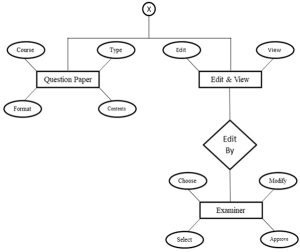
Enhancing security measures
- Encryption protocols: In order to ensure a high level of security, the project uses advanced level of encryption protocols. This layer of protection helps in protecting the examination papers from any unauthorized access. This helps in upholding the confidentiality of the submitted content.
- Access control: The rough access control results in adding an additional layer of security. This is permitted only to the authorized personnel, who can manage, view, as well as process the submitted papers. This helps in safeguarding the level of integrity of the process of examination.
Academic Writing Services Online
Integration with examination cell system
- Seamless data transfer: This project helps in facilitating real-time and seamless transfer of submitted papers to the examination of the cell systems. This integration helps in reducing the delay in processing, which helps in providing timely updates to the professors.
- Real time updates: The professors also receive real-time updates which shows the status of their submitted papers. This level of transparency helps in enhancing communication between the examination authorities, which fosters a collaborative academic environment.

User-friendly interface
- Intuitive design: It is highly necessary to ensure ease of use, and the project helps in boasting a user-friendly intuitive interface. This helps in allowing the professors to navigate the overall system in an effortless manner. This design also helps in promoting a widespread adoption all across the academic community.
- Accessibility features: In incorporating the feature of accessibility, it helps in ensuring inclusivity. This entire system accommodates a diversified need, which helps in providing an accessible platform for all the professors apart from individual requirements.
Technical challenges and solutions
- Compatibility issues: In order to address the concerns of compatibility, the project experiences various testing in order ensure a seamless performance across different browsers and devices. This approach helps in providing guarantee of a smooth user experience for all the professors.
- Server load management: The efficient level of server load management is highly critical especially during the time of peak usage. With the help of implementing the load balancing strategies for the prevention system slowdowns, that ensures a consistent performance.
Buy Assignment Online
Future expansion and updates
- Incorporating AI for paper evaluation: While looking ahead, the project envisions artificial intelligence for automated paper evaluation. This future development aims toward further streamlining the examination process for enhancing efficiency.
- Mobile application integration: With the help of considering the ever-evolving nature of technology, the future updates can also include the development of a mobile application. This integration can help in offering the professors with greater flexibility and accessibility.
Impact on academic institutions
- Improved efficiency and transparency: Implementation of the project leads to improved efficiency and transparency in the process of examination. This transformative level of impact helps in benefitting both faculty and students, by enhancing overall academic experience.
- Students and faculty satisfaction: This streamlining of administrative processes helps in contributing towards increased satisfaction among students and faculty. This project helps in fostering a positive academic environment, which promotes a collaborative and supportive community.
Consideration for implementation
- Training programs for faculty: For successful implementation it requires a comprehensive training program for the faculty members. This helps in ensuring proficiency in using the online submission system which is highly vital for an effective adoption.
- Scalability of the system: In terms of scalability, which is highly crucial for consideration, especially for the longer institutions. This system efficiently manages a growing volume of submission without any compromising with the performance.
Academic Writing Services
Conclusion
In conclusion, the Professor Online Question Paper Submission project is powered by ASP.Net which redefines how academia manages the examination papers. Beyond this technical ability, this project also helps in contributing towards the advancement of academic processes. This blog shows how this project helps in fostering efficiency, transparency and collaboration from different aspects.
HOSPITAL MANAGEMENT SYSTEM VB.NET WINDOWS APPLICATION PROJECT
Introduction
In today’s timeframe most of the hospitals are juggling with diverse level of tasks, which involves managing information of patients, appointments, billing, and staff scheduling and so on. This all process is done using the manual processes which can be highly time consuming along with prone to various errors and also hinders the efficiency of operations. However, VB.Net helps in offering a powerful level of tools for streamlining he management in the hospitals using Hospital Management System (HMS). This blog is going to show you the different functionalities and potential benefits of this VB. Net-based HMS.
Online .NET Project Reports
Understanding the requirement
Most hospitals navigates a complex level of ecosystem in terms of managing different departments and the workflows. This efficient level of hospital management highly requires:
- Accurate patient data management: This provides a secure storage and retrieval of patient’s demographics along with their medical history about their allergies and medications.
- Streamlined appointment scheduling: This helps in providing efficient scheduling system and management of patient’s appointments, consultations and procedures.
- Effective billing and insurance management: This also provides an accurate generation of bills, by integrating with the insurance provider, along with clear management of payment of patients.
- Improved staff communication and scheduling: An efficient communication between the medical staff, smooth scheduling and real-time updates on the status of patients and availability.
Buy Assignment Online
Usage of VB.Net
The VB.net is a very popular and a versatile programming language which lies within .NET framework that helps in empowering the developers to create user-friendly and a strong hospital management system. Some of the glimpse of the functionalities of VB. Net HMS hat it offers are:
- Patient Management: This process involves the creation and storage of detailed records of patients, which include various demographics along with medical history, allergies and medications. This helps in facilitating online appointment scheduling and registration processes, along with tracking the progress of patients and their treatment plan.
- Appointment management: This involves management of appointment scheduling for doctors, nurses and other specialists. This helps in enabling online appointments for booking and cancellation functionality for patients by sending them automated remainders of appointments via mail or SMS.
- Billing and Insurance Management: This involves generation of detailed invoices for all those services which are rendered and the medication prescribed. With the help of integrating this with the insurance providers, it verifies the coverage and automation claim submissions. This also track the patient’s payments and manage their outstanding balances.

- Inventory Management: This involves maintenance of accurate inventory of medical supplies, medications, and equipment. It also include the feature of tracking stock levels and helps in generating reorder reports for the prevention of any shortages. This also helps in managing the information of suppliers and maintaining purchase orders.
- Staff Management: This involves scheduling the shift of staffs and managing the request of leaves, along with managing and tracking staff performance. This also helps in facilitating communication among the staff through the system of internal messaging.
.Net Project Reports
Benefits of a VB.Net HMS:
- Improved efficiency: This VB.Net HMS helps in streamlining the workflow by reducing the manual tasks and enhances the overall level of efficiency.
- Enhanced accuracy of data: This VB.Net HMS also helps in minimizing different level of errors which are associated with the manual data entry and promotes data integrity.
- Better decision-making: It also helps in providing real-time insights into the operations of hospitals.
- Improved patient care: This helps in enabling faster access of patient information, which helps in facilitating communication between patients and the healthcare providers and also improves the overall patient experience.
Beyond the core functionalities
There are various functionalities which are mentioned above helps in forming the foundation of a VB.Net HMS, which comes with additional features for the value enhancement:
- Reporting and analytics: This helps in the generation of comprehensive reports on different aspects such as patient demographics, appointment trends, billing details, and staff performance.
- Laboratory integration: This also involves the benefit in case it gets integrated with the laboratory systems for which helps in making seamless transfer of the test results and improved diagnostics.
- Telemedicine integration: This helps in providing virtual consultations and also provide monitoring of remote patients.
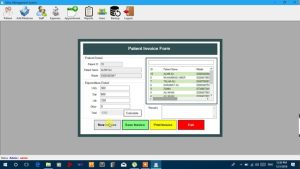
In terms of developing a VB.Net HMS, it requires a careful planning and execution through a simplified process:
- Planning and requirement gathering: This involves a clear outlining of the functionalities which is required in the HMS for possession, by considering various factors such as size of the hospital, needs of department, and overall budget. Thereafter, it comes designing the user interface, which helps in ensuring that, it caters to the diverse base of users. This includes doctors, nurses, administrators, and patients that comes with varying level of technical expertise.
- Development environment setup: This development process starts with downloading and installing the latest version of Visual Studio Community. This comes with a free and comprehensive IDE suitable for building VB.Net application. Along with selecting a suitable Data Base Management System (DBMS) like Microsoft SQL Server or MySQL for the storage of the application data.
- Development process: For the development of core functionalities of the healthcare management system, it starts with the implementation of patient’s management, appointment scheduling, billing. Along with insurance management and inventory management using the VB.Net programming language and relevant .Net libraries. This integration of database integration will be highly crucial for an efficient storage and retrieval of data.
- Testing and deployment: After the conduction of a difficult test for ensuring the application function which highly intends to be free of bugs and delivering accurate results. This involves various group of users for the process of testing to gather feedbacks and ensuring usability across different roles of users.
Online .NET Project Reports
Conclusion
In conclusion, it can be seen that, A VB.Net HMS serves as a game changer for hospitals, which helps in enabling efficient management of patient data, appointments, billing and staff resources. This helps in leveraging the capabilities of VB.Net, hospitals can create a streamlined as well as data-driven environment. This ultimately helps in contributing towards the improvement of operational efficiency, which enhances patient care and helps in making better decisions.
REAL-TIME MAP-BASED POLLUTION MONITORING AND DATA MANAGEMENT SYSTEM
Introduction
This blog is based on air pollution which is one of the growing levels of concern all around the globe, and which is significantly impacting our health, environment as well as entire well-being. Earlier, people used to consider traditional monitoring methods which comes with limited reach as well as delayed data. This resulted in struggling with keeping a pace with the dynamic nature of pollution. However, this new wave of technology has emerged, which is called “Real-time Map Based Pollution” Monitoring. In this blog, it is going to show you the innovative system, which helps in exploring different components and benefits. These involves great level of potential that results in impacting for fighting for cleaner air.
.NET Project Reports
Understanding the system:
Based on the core of this system, which involves a network of different sensors which are strategically placed throughout the city or regions. All these sensors also very compact and low cist, which continuously helps in measuring different pollutants like particulate matter (PM2.5 and PM10), ozone (O3), nitrogen dioxide (NO2), and sulphur dioxide (SO2). All these collected data then get transmitted in a wireless manner to the central hub. The central hub also acts as a brain of the entire system. This also receives data streams from multiple sensors. This also processes the information and stores in a secured level of data base. The advanced algorithm can also get employed for analysing the data, for the identification of pollution hotspots. This also predicts future trends which are based on the pattern of weather, and other environmental factors.
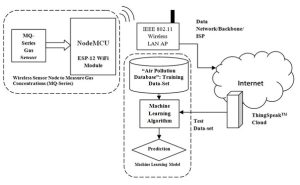
The final and the most user-friendly component reflects the map-based interface. This interface, is completely accessible through web browsers and mobile applications. Later on, it get translated to the complex data into a readily understandable format. With the help of this real-time pollution the users can easily see the different levels which are displayed on a map, which also include coding. This helps in allowing the individuals in order to make informed level of decision regarding the daily routines. This planning includes different outdoor activities for choosing exercise routes for lower level of pollution.
Benefits of real-time system:
There are various level of benefits for the utilization of real time map-based pollution monitoring system:
- Enhanced public awareness: The overall system helps in empowering the citizens with the real-time information regarding quality of air of the immediate surroundings. This helps in providing knowledge which allows them for taking various preventive measures in order to protect their health. This can be seen especially for the vulnerable populations like children or elderly people.
- Improved decision-making: This real-time data helps in empowering policymakers with valuable level of insights into pollution patterns and sources. This helps in allowing them for developing the targeted regulations. This can be done with the help of implementing effective pollution control strategies and track the level of effectiveness of the existing measures.
- Empowering research and innovation: There is a vast amount of data which has been collected by the system which helps in goldmining for the researchers. With the help of analysing the historical and real-time data, scientists can also gain a deep level of understanding in regards to the pollution dynamics. This also helps in leading to advancement in air quality prediction and mitigation techniques.
- Promoting transparency and accountability: The nature of this real-time nature of the system helps in fostering the level of transparency with the help of providing readily accessible data open for all.
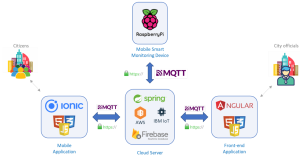
The Road Ahead:
This “Real-Time Map-Based Pollution Monitoring and Data Management System’s is highly evolving which holds an immense level of potential for revolutionizing our approach to the management of air quality. With the help of integrating the sensor networks, data analytics, and user-friendly interfaces, these system helps in empowering all the stakeholders for playing a crucial role towards creating a clean and pure air for a healthier future.
Assignment Writing Services
Technical Aspect
The level of effectiveness of “Real-Time Map-Based Pollution Monitoring and Data Management System” also get affected by the technological foundations. This involves different components including some of the key areas such as:
- Sensor Network: The overall system highly relies on the network with diverse sensors in which each plays a crucial role. Including optical sensors which helps in measuring light scattering by particulate matter which helps in providing data on PM 2.5 and PM10 levels. Thereafter, some of the electrochemical sensors which helps in detecting specific gases like NO2 and SO2 with the help of measuring their electrical properties while interacting with the sensors. There are “Metal Oxide Semiconductors (MOS) sensors which helps in offering broad detection of various pollutants.
- Data transmission: There are various sensors which helps in transferring data wirelessly with the help of using different protocols such as Wi-Fi, Bluetooth Low Energy (BLE) or other cellular networks. With the help of selecting an ideal protocol it highly depends on different factors that ranges power consumption and network availability.
- Central Hub and Data management: The central hub helps in receiving the data streams from different sensors which helps in performing the real-time data processing, which also stores the overall data in secure manner. This cloud computing platforms helps in offering a scalable and cost-effective solution for data storage and management.
This Real-Time Map-Based Pollution Monitoring System get extended beyond the public awareness which helps in offering different applications such as precision health management for different individuals with respiratory conditions. This helps in contributing towards smart city initiatives with the help of monitoring and enforcements.
Online Assignment Writing Services
Conclusion
In conclusion, it can be said that, the “Real-Time Map-Based Pollution Monitoring and Data Management System”, helps in offering a powerful tool for making air cleaner. With the help of providing real-time information, it empowers the stakeholders for driving innovation. These systems helps in paving the way for future with clear air which is not privilege, but not the basic right. This success of such system also interrupts the collective effort. This continuous technological advancement has a strong level of data security measures and responsible citizen engagement which is highly crucial in different aspects for achieving a sustainable future with clean air to breathe.
